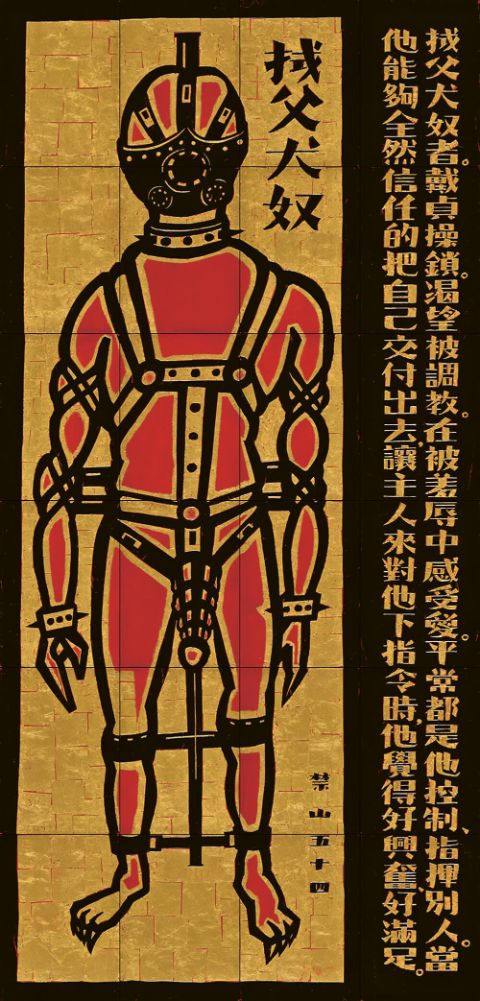Hou Chun-Ming

Hou Chun-Ming, Revolt of the Slave, from the series Body Image: Man Hole (2017). Courtesy of the artist and Each Modern
In the early 1990s, as Taiwan emerged from decades of martial law and authoritarian rule, Hou Chun-Ming garnered attention with woodcuts and illustrations exploring sexuality, corporeality, and queerness. His radical fusion of eroticism and religious symbolism evokes questions of power, desire, and social repression. Working across graphics, installations, and performances, Hou documents moments of social upheaval and challenges taboos and dominant political structures in Taiwan. Following a personal crisis in the late 1990s, the artist turned inward, using art as a tool for spiritual healing and self-discovery. Hou’s visual language is marked by a distinctive mythology of gods, magical symbols, and rituals. His work oscillates between myth and contemporary life, weaving Taiwanese folk beliefs together with themes of sexuality and self-inquiry. Body Image: Man Hole (2017) is based on interviews with men from the Taiwanese LGBTQIA+ community about their sexual preferences and experiences. The project highlights parental, especially paternal, influences on sexuality and addresses identity, desire, and family. Revolt of the Slave (2017) tells the story of a man who suffered humiliation and rejection from his father as a child. His BDSM preference for insults, punishment, and pain now serves as an experience of unconditional love. For The Asian Father Interview Project, Hou has been interviewing people from six Asian cities about their relationships with their fathers since 2008. The participants translated their feelings and memories into visual metaphors. In the artist’s interpretation, they merge into a multi-layered commentary on identity, family, and society. The father as an authoritarian figure symbolizes the state; the micro-political power relations within the family reflect social and political hierarchies. In Hong Kong in 2016, Hou exclusively interviewed gay men. Traditional gender roles and family obedience are deeply rooted in the Confucian influenced societies of East Asia. The Asian Father Interview Project: Fathers of Male Homosexuals in Hong Kong (2016) sheds light on this area of tension and helps to strengthen queer voices and experiences.
WORKS IN THE EXHIBITION: Revolt of the Slave from the series Body Image: Man Hole (2017), paint and gold leaf on paper, 326.4 × 156.8 cm; The Asian Father: Seoul (2018), series of 3 sets of works, acrylic on paper panel, oil and pastel on paper, QR codes, dimensions variable; The Asian Father: Fathers of Male Homosexuals in Hong Kong (2016), series of 6 works of acrylic on nylon bags, QR codes, dimensions variable; The Asian Father: Bangkok (2010), series of 6 works, acrylic on writing books, QR codes, dimensions variable. Courtesy of the artist and Each Modern